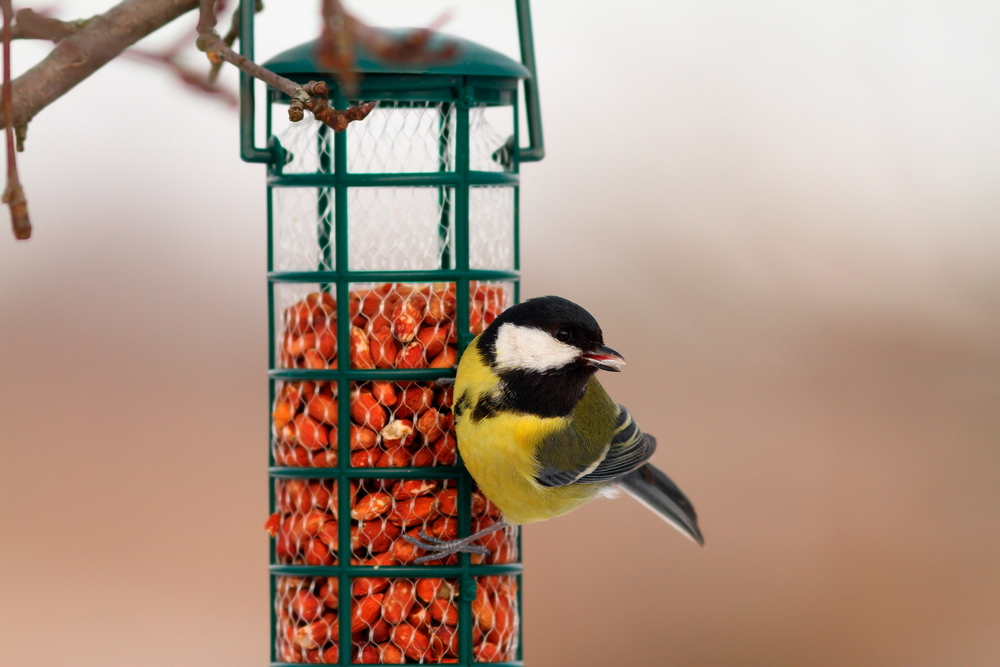Following the recent outbreak of Coronavirus and the current guidance to self-isolate and practice social distancing, we know that you may be worried about the amount of fresh air and spring sunshine you will (or will not) be able to enjoy whilst staying at home. At WildThings, we love all things wildlife and have put together these crafty ideas of how you can enjoy your garden and the wonders that it can bring!
Craft DIY Bird Feeders
What better way to enjoy some peaceful time at home than to watch a beautiful array of birds visit your garden to enjoy some food. There are plenty of bird feeders that can be bought, but have you ever tried to make one for yourself? Creating a DIY bird feeder can be a great activity to do alone or you can include your children or family members and everyone can enjoy the results – you could even have a contest to see who’s bird feeder is the most popular with your garden guests. For a simple bird feeder, all you’ll need is a plastic bottle, two sticks, some string and birdseed! Check out this handy video guide for how to create your feeder.
Build a Hedgehog Hotel
Our hedgehog friends are now more likely to be seen around your gardens, as they will be getting ready to raise hoglets and make up for the fat loss that they will have experienced over the winter. Sadly, hedgehog numbers are in decline and they rely on our communities to support them and help them stay safe. Whilst you have some extra time at home, you could take this opportunity to play a part in the conservation effort for our spiky friends. One way you can do this is to create an appealing space for them in your garden – If you’re lucky, you may just get a recurring visitor to keep watch over for the foreseeable future! To create the perfect palace for a hedgehog, it needs to be made up of the following
- A tunnel for entry
- A dark and dry enclosed space inside with dry leaves and straw (make sure the space is ventilated)
- Surround with logs to attract insects (hedgehog prey!)
- Leave out a shallow dish with hedgehog food and a second dish with water
With regards to what the house is made of, get creative with what you have around the home! Maybe an old plant pot or plastic box that could be turned upside down to create a cosy place to sleep. Are you an aspiring carpenter and fancy creating a wooden mansion for your hogs? We’ve seen successful houses from the simple to the extravagant, but the most important thing to remember is that you need to have an access point to your garden for the hedgehog to find your hotel. Therefore, make sure there is a hole or gap in your garden fence (AKA a Hedgehog Highway) so that your little friends can find their way in.
Want some more guidance on how to build one? Check out this guide from Gardeners’ World.
Create a Wild Corner
Choose a corner of your garden to go wild! The key to a great wild corner to attract an array of wildlife is variety – create open areas, enclosed and shaded areas and lots of levels to appeal to the masses. If you are able to get some seeds, try planting some new wildflowers in the area and watch them grow.
- Create a pile with different rocks and stones to create lots of hiding places for creepy crawlies, you can also add any leaves and sticks you can find too to create more variety in the space
- Add some kind of water to the corner, try submerging a half-barrel, trough style planter or even a small tupperware tub below the surface and filling with water, this could appeal to birds to take a refreshing sip and bath, or even to some of our bigger wild friends like badgers and foxes to come and rehydrate too.
- Why not add some of your veggie kitchen scraps to the corner too, this will act as a natural fertiliser for your garden as well as offering an appealing snack to some wildlife.
There are plenty of great ways to stay active and experience fresh air, enjoy the spring sunshine and the beauty that nature has to offer whilst still remaining safe at home. Try to create lots of interest in your garden by repurposing everyday household items and see what wildlife turns up! If you’ve got children, why not download our wildlife activity sheets to keep them busy too. We’d love to see what beautiful wildlife your garden has to offer, share your photos and ideas with our WildThings community on Facebook.








